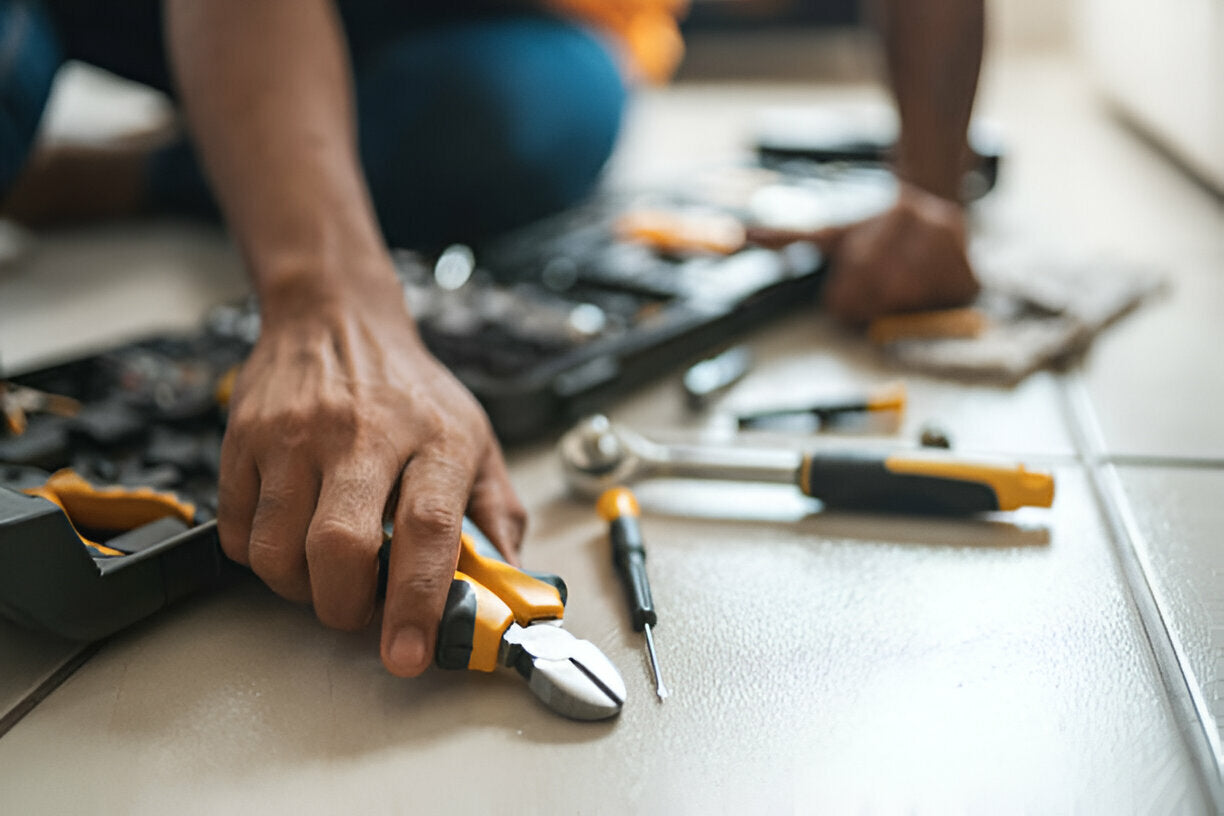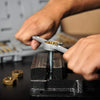
Unconventional Hand Tool Hacks That Work
In the dynamic world of DIY projects and home improvement, the essence of innovation lies not just in cutting-edge technology but also in the creative utilization of tools at hand. The ability to look beyond conventional use and discover alternative applications can significantly enhance efficiency, reduce costs, and spark creativity. This guide dives deep into the realm of unconventional tool hacks that every DIY enthusiast, professional in hardware shop retail, and participant in global manufacturing should know. By reimagining the use of everyday hand tools, we unlock a treasure trove of possibilities that streamline tasks and bring forth ingenious solutions to common problems.
Transforming Screwdrivers
Screwdrivers are indispensable in any toolkit, known primarily for driving and removing screws. Yet, their potential extends far beyond these basic tasks.
Aligning Holes
- Guide for Hardware Assembly: Use a thinner screwdriver to help align bolt holes during assembly, easing the installation process.
- Step-by-Step: Insert the screwdriver into one hole and gently maneuver the pieces until the opposing holes align, then insert the bolt or screw as needed.
Paint Can Opener
- Leveraging the Handle: A flathead screwdriver can serve as an efficient tool for prying open paint cans without damaging the lid.
- How to Open: Wedge the tip under the lid's edge and twist the handle gently. Work around the lid's perimeter for an easier lift.
Cleaning Tools
- Scraping Away Residue: A screwdriver can remove buildup from other tools or surfaces, acting as a precise scraper.
- Effective Scraping Techniques: Choose a screwdriver that matches the size of the residue area. Use the edge to scrape away materials carefully, avoiding damage to the underlying surface.
Innovative Uses of Hammers
Beyond driving nails, hammers possess the versatility for various unexpected tasks, proving their worth as multi-functional tools.
Makeshift Anvil
- Flattening or Shaping Metal: Use the flat side of a hammer's head as an anvil. Place a small metal object atop it and strike with another hammer.
- Flattening Technique: Ensure stability by securely holding the hammer used as an anvil. Apply even strikes to avoid warping the material.
Dismantling Furniture
- Leverage for Disassembly: The claw end of a hammer can be employed to dismantle wooden furniture gently.
- Disassembly Steps: Wiggle the claw end under the joint or part needing separation. Apply steady pressure to pry apart without causing unnecessary damage.
Tenderizing Meat
- Culinary Application: In the absence of a meat tenderizer, a clean hammer can be wrapped in plastic and used to tenderize meat.
- Tenderizing Process: Cover the hammer's face with several layers of plastic wrap. Gently pound the meat to the desired tenderness, ensuring even coverage.
Rethinking Pliers
Pliers are pivotal for gripping and manipulating objects. Their application, however, can extend into more inventive territories.
Zipper Pull Replacement
- Temporary Fix: Needle-nose pliers can act as a makeshift zipper pull by creating a loop with a piece of wire or a paperclip.
- Creating a Loop: Fashion a small loop with the wire using the pliers. Attach this loop to the zipper head for a temporary pull mechanism.
Holding Nails
- Safety First: To avoid hammering fingers, use pliers to hold nails in place while driving them into surfaces.
- Holding Technique: Grip the nail firmly with the pliers at the desired angle and position. Hammer carefully, ensuring the pliers are clear of each strike.
Jewelry Making
- Crafting and Repair: Pliers are excellent tools for bending wire, closing jump rings, and shaping homemade jewelry.
- Jewelry Techniques: Use needle-nose pliers for precision tasks like wire shaping or tightening clasps, ensuring delicate handling to prevent damage.
Leveraging Wrenches
Typically used to turn bolts and nuts, wrenches can also perform in capacities that stretch beyond their original design.
Straightening Bent Metal
- Correcting Misalignments: A wrench can straighten bent metal rods or brackets with careful application.
- Straightening Method: Secure the bent section within the wrench's jaws. Apply slow, controlled pressure in the opposite direction of the bend until alignment is achieved.
Makeshift Compass
- Drawing Large Circles: By tightly securing a pencil and adjusting the wrench span, you can create a compass for large arcs or circles.
- Compass Creation: Attach the pencil at one end and use a nail or a fixed point as the pivot. Swing the wrench around this point to draw your circle.
Measuring Tool
- Emergency Ruler: The length of a wrench can be used as a quick measuring reference when a ruler is not available.
- Measurement Hack: Know the exact length of your wrench. It can then be used to measure or mark off distances in a pinch.
Adapting Chisels
Chisels carve out materials with precision, but their sharp edges offer more unconventional uses.
Opening Crates or Boxes
- Prying Apart Wood: A sturdy chisel can be used as a prying tool for opening wooden crates or boxes.
- Prying Technique: Insert the chisel's edge into the seam or joint. Carefully lever up to pry apart the pieces without exerting excessive force.
Cutting Soft Materials
- Slicing Through Soft Plastics or Rubber: The sharp edge of a chisel can make clean cuts through softer materials.
- Cutting Steps: Place the material on a stable surface. Use the chisel like a knife, applying even pressure to make straight cuts.
Removing Tiles
- Floor and Wall Tile Removal: A chisel can efficiently remove tiles when renovations are required.
- Tile Removal Process: Position the chisel's edge against the tile's base. Tap gently with a hammer to loosen and lift the tile, repeating as necessary.
Related Article: Top 10 Automotive Tool Hacks
Empowering Creativity and Efficiency
These unconventional hand tool hacks serve as a testament to the ingenuity that drives the DIY community and professionals in various industries. By looking beyond, the standard functions of our tools, we not only enhance our problem-solving skills but also uncover new ways to accomplish tasks with greater efficiency and creativity. In a world where innovation is key to advancement, such resourcefulness is invaluable. Remember, the next time you reach for a tool in your kit, consider the untapped potential it holds for making your work simpler, safer, or more satisfying.
Related Article: The Best Tool Hacks You Need to Know About!


